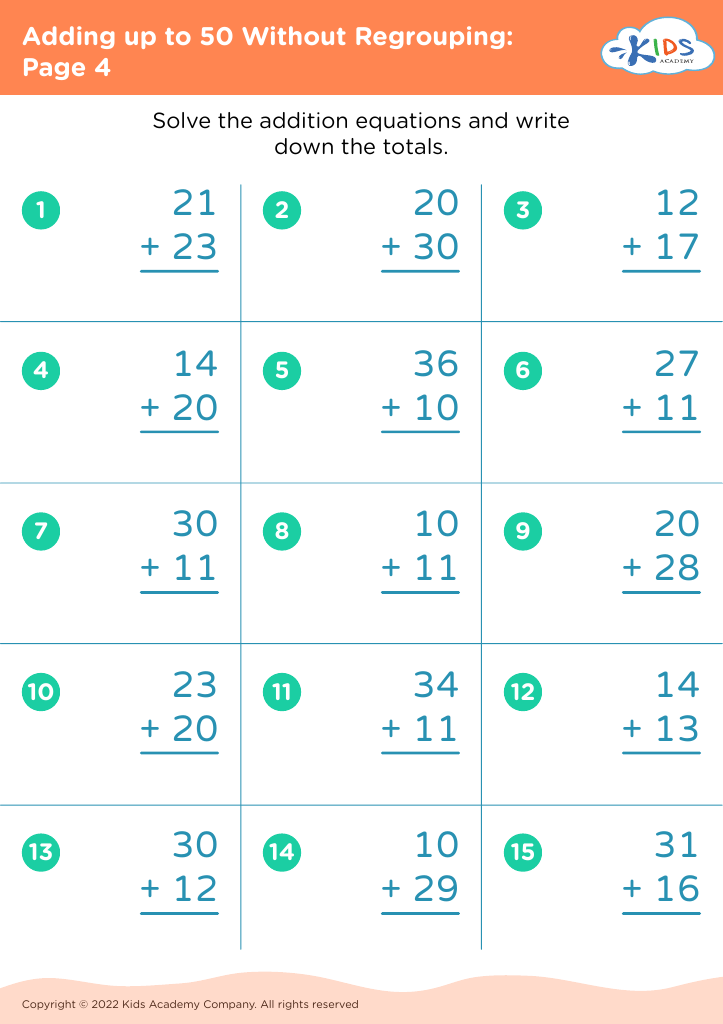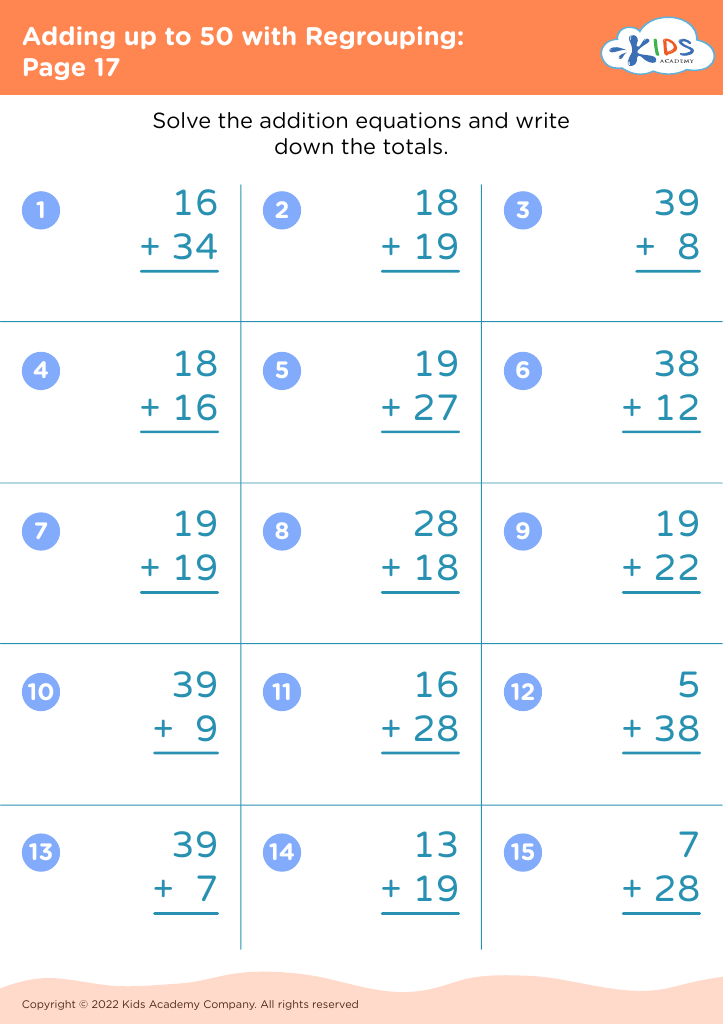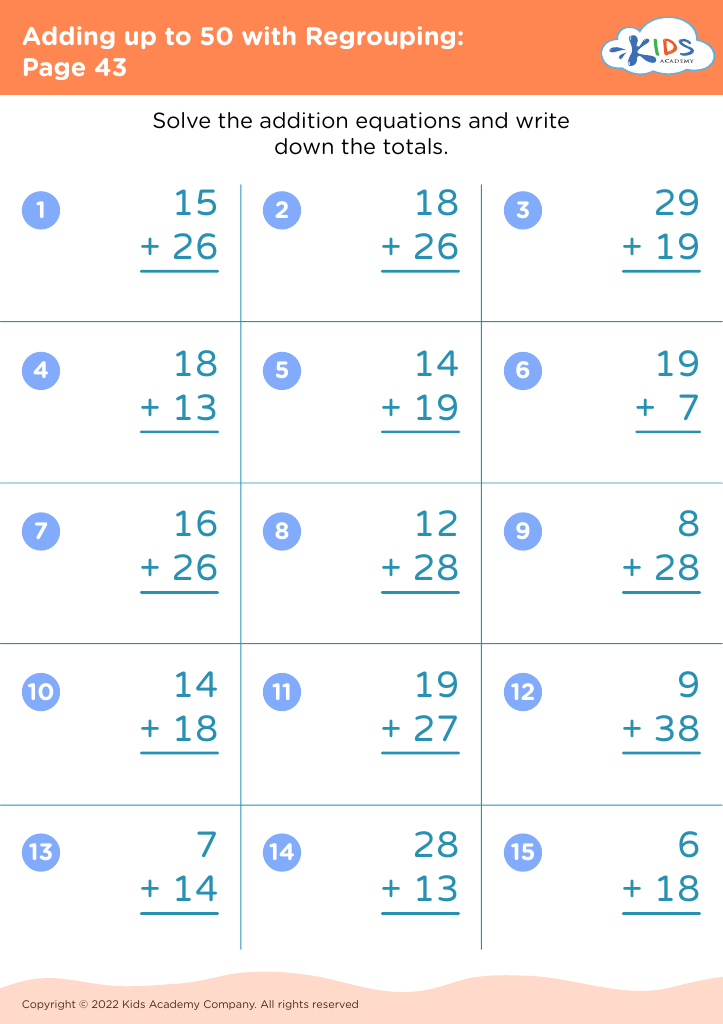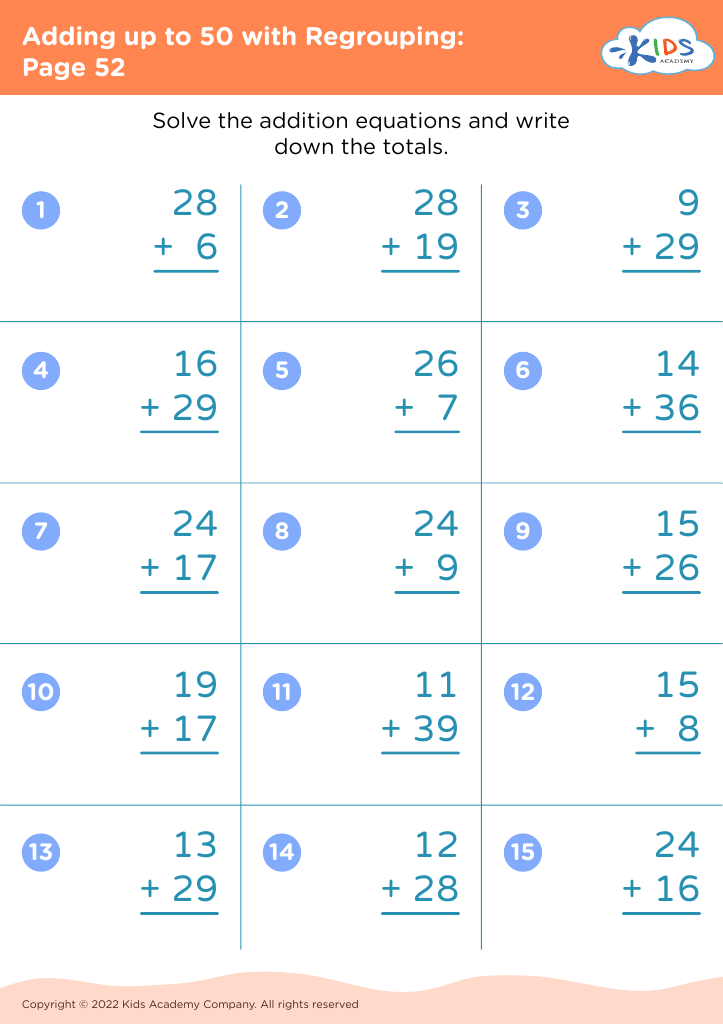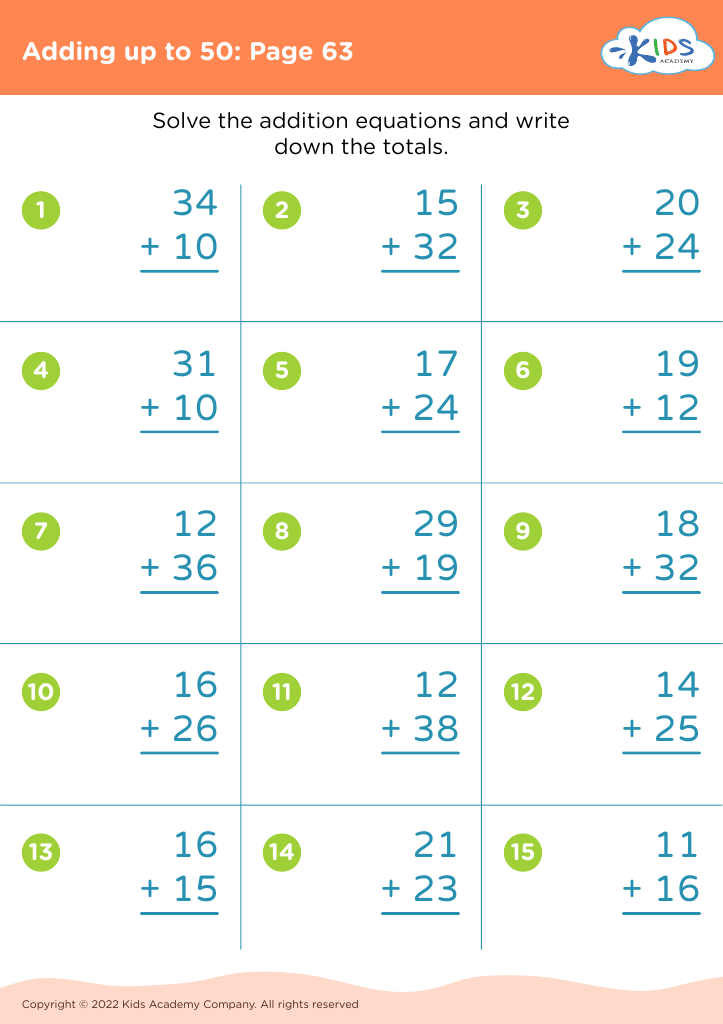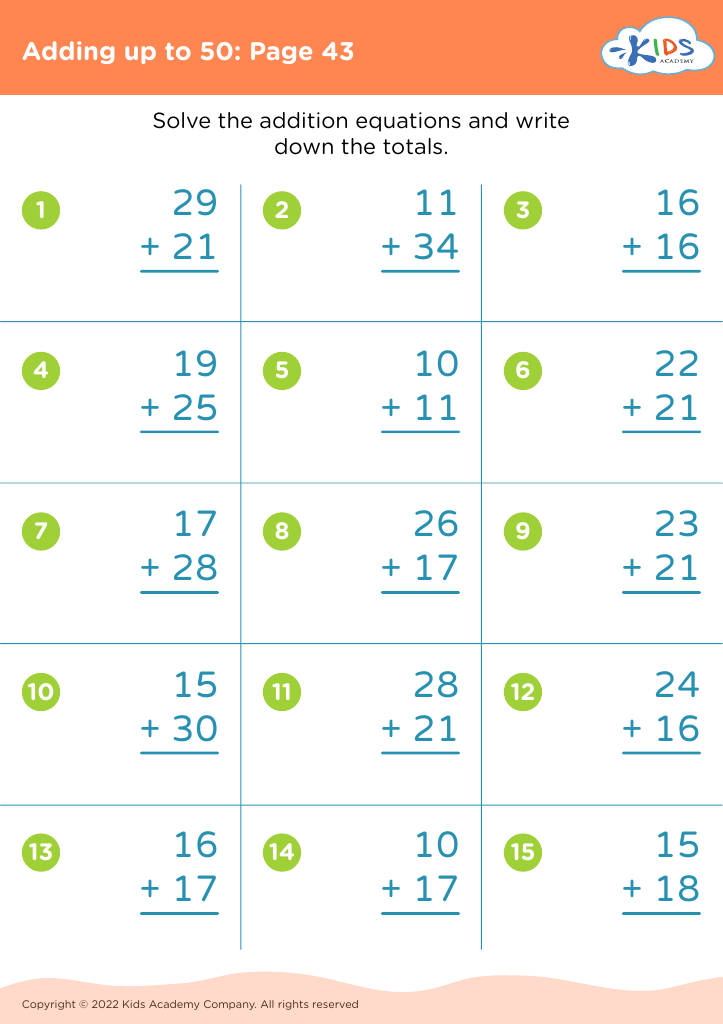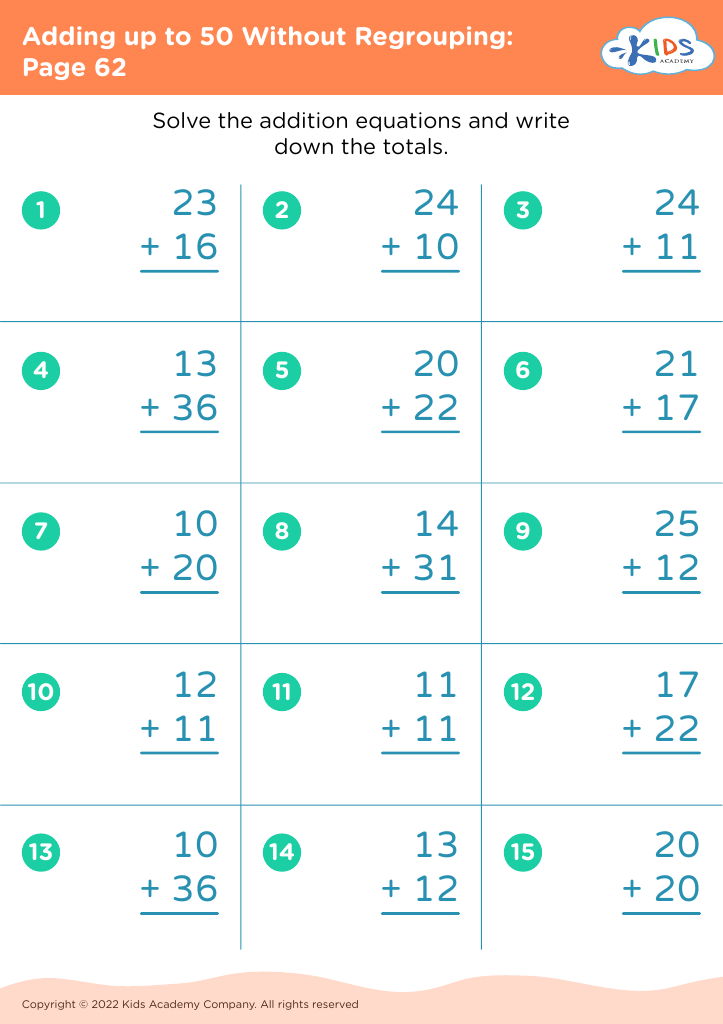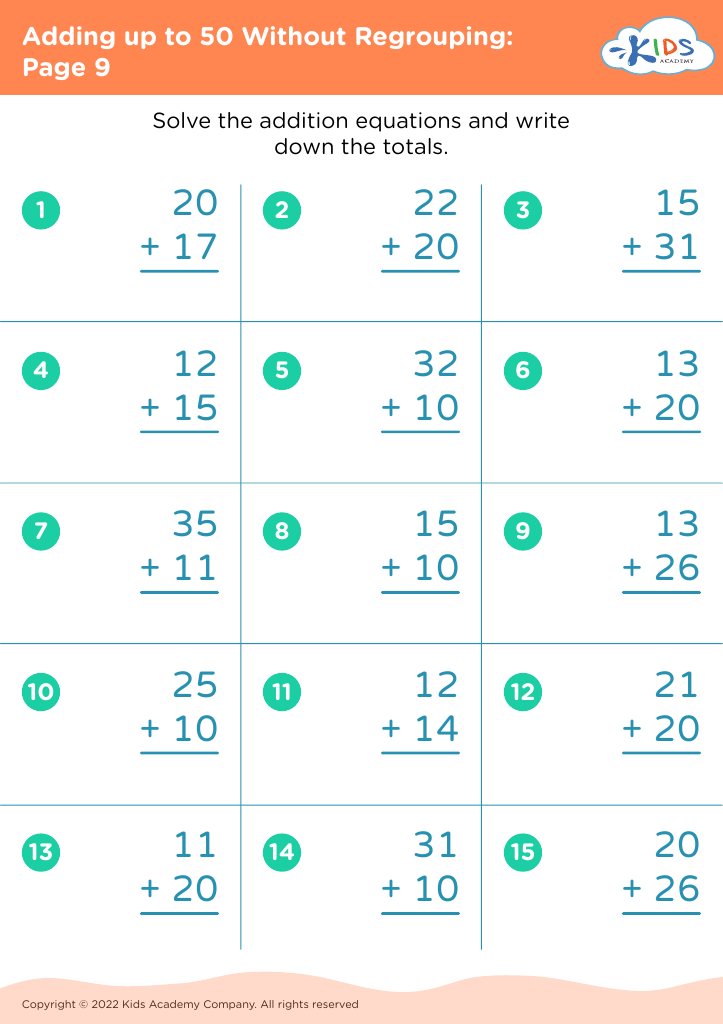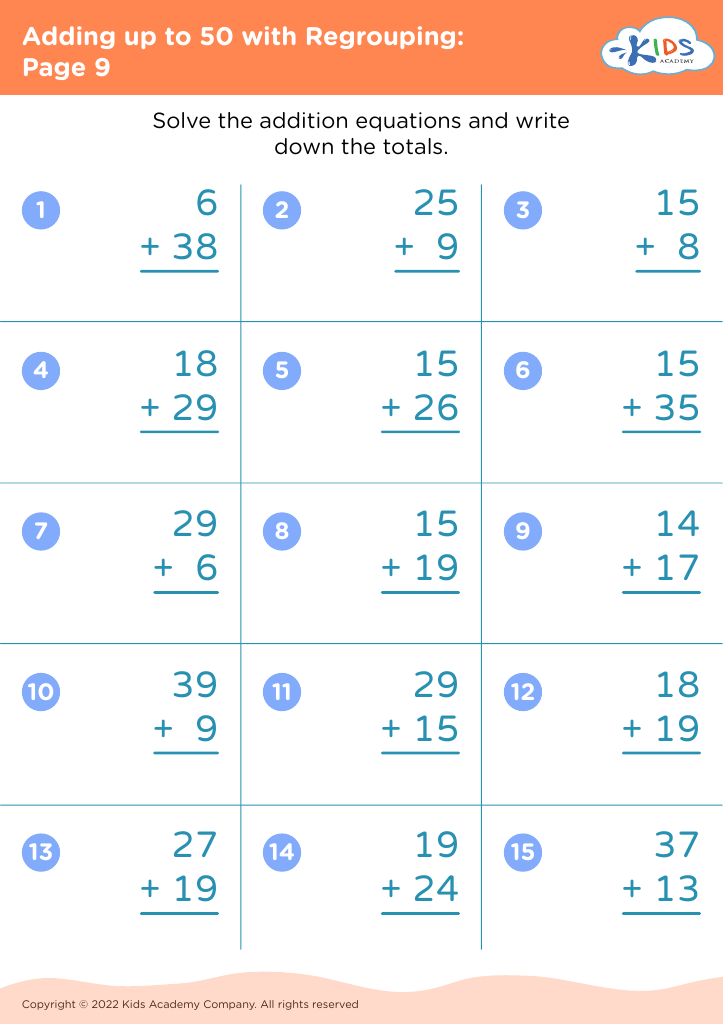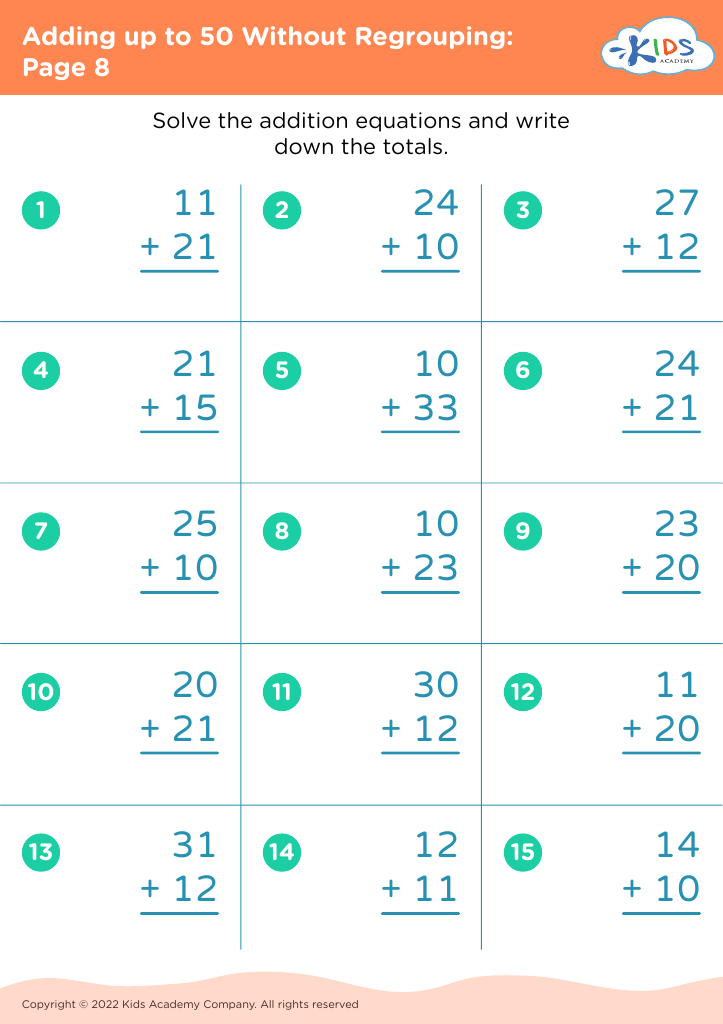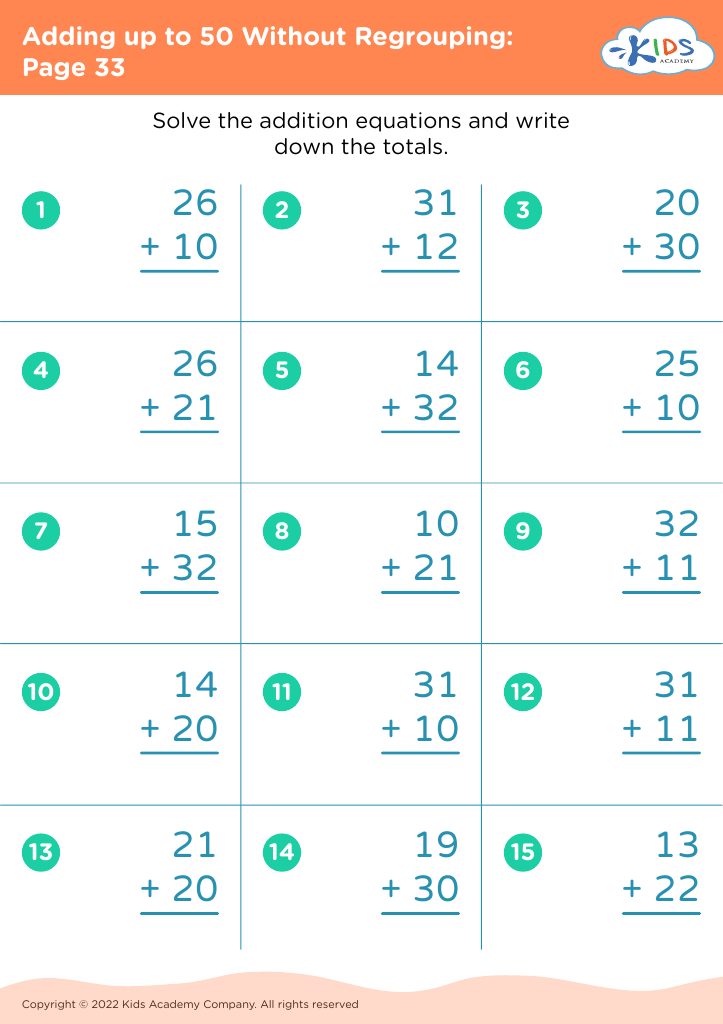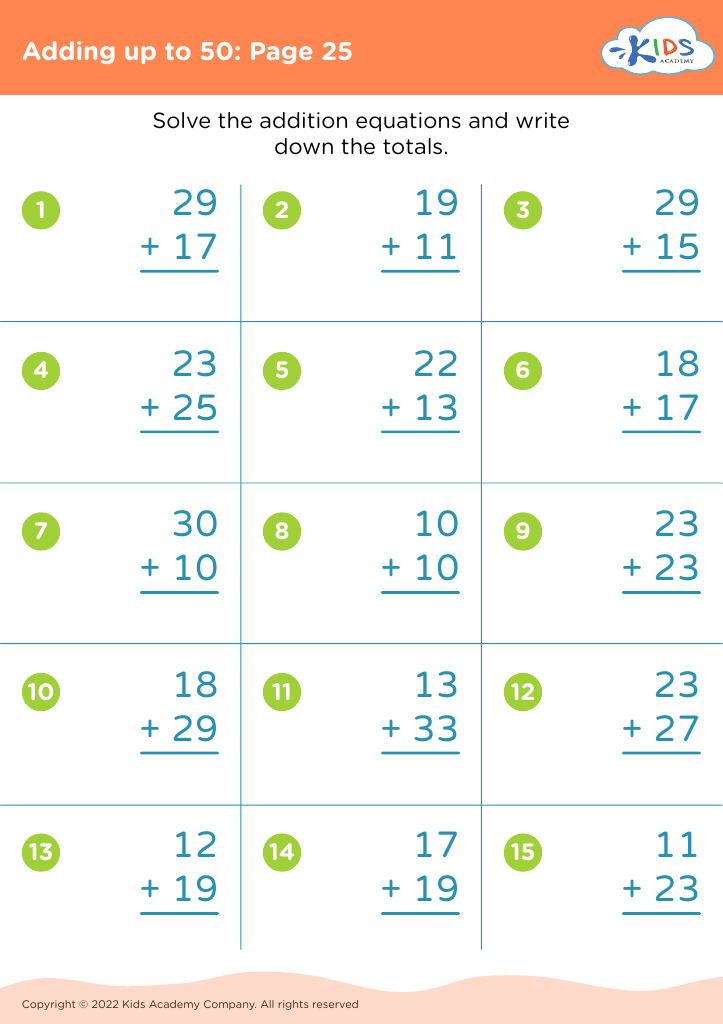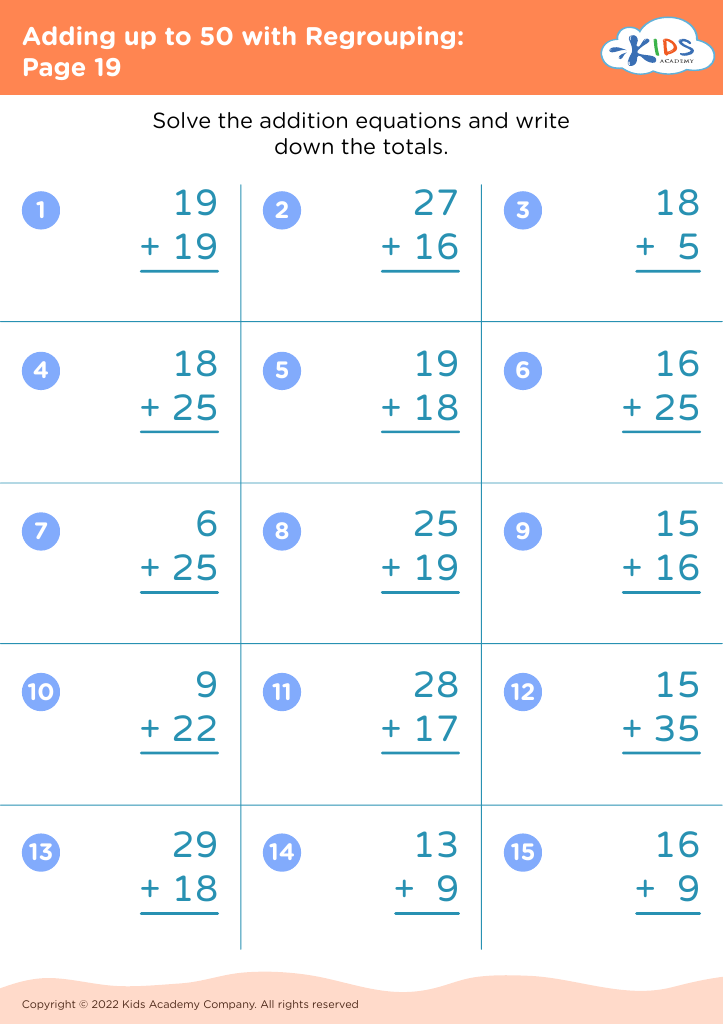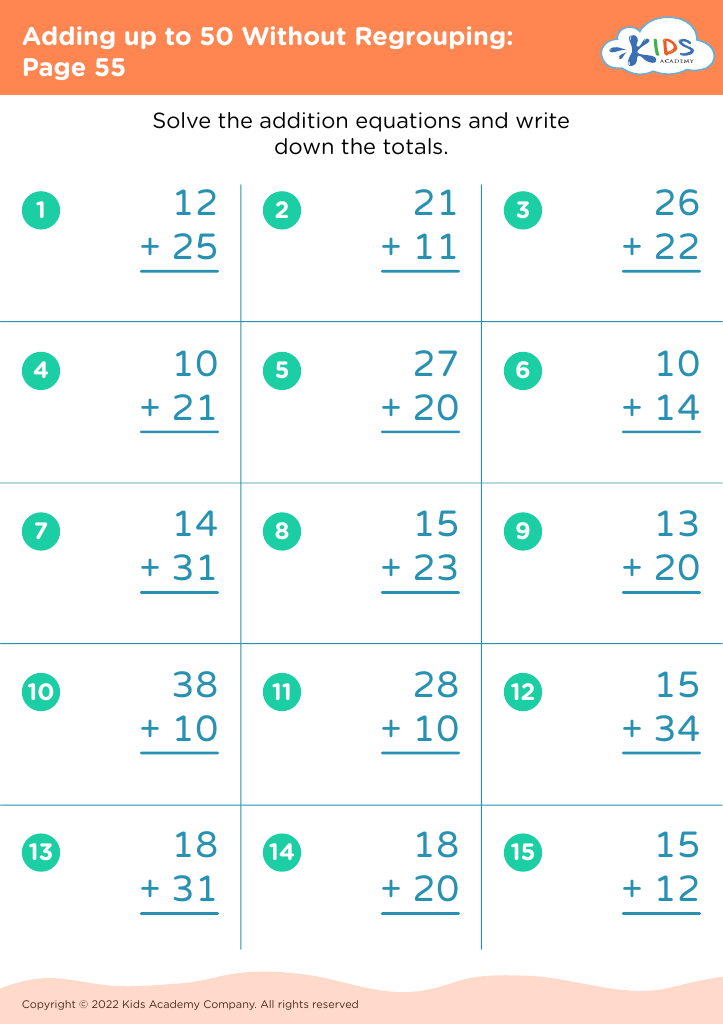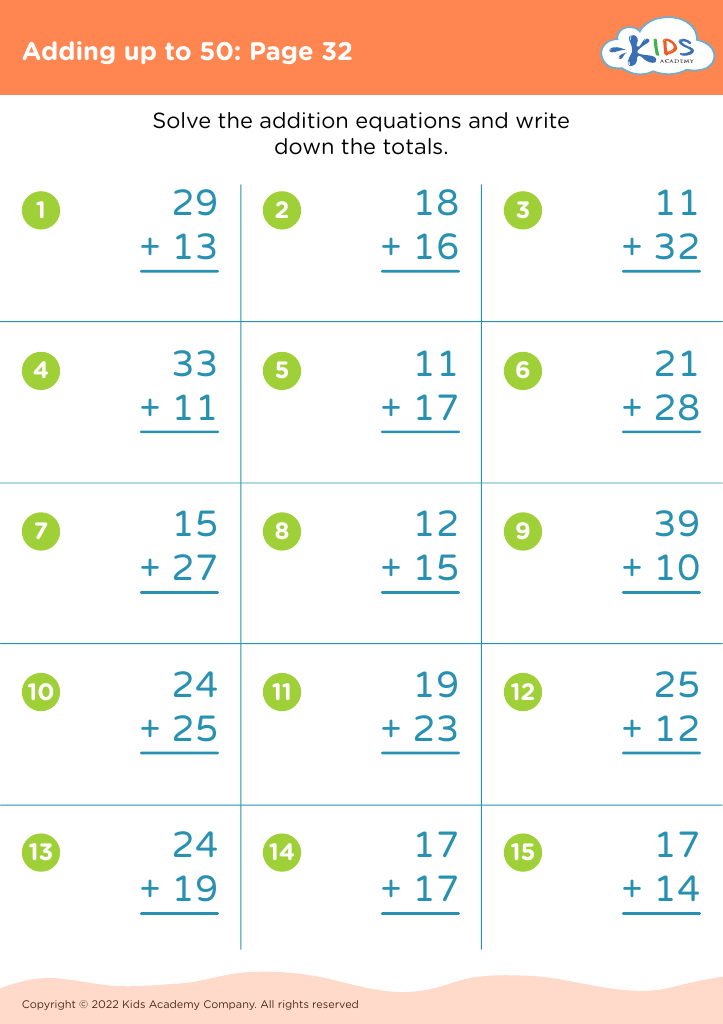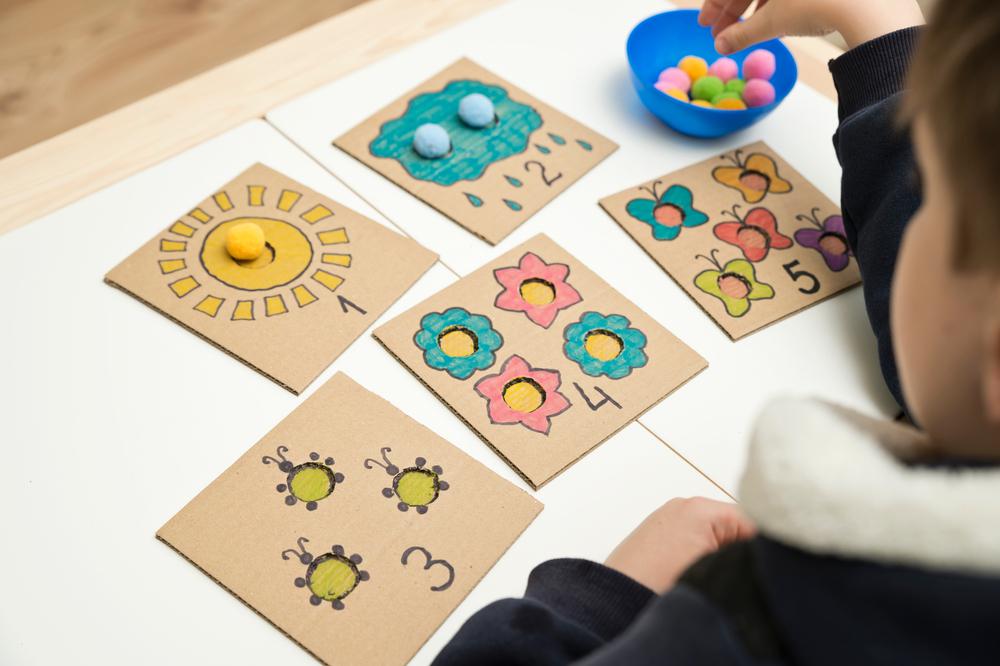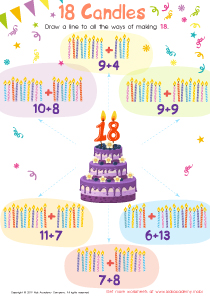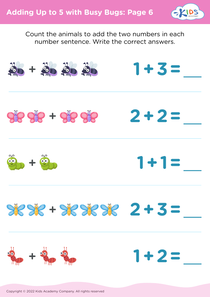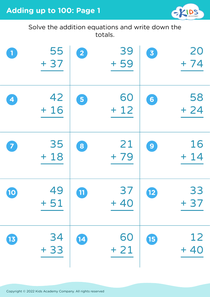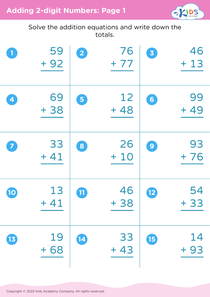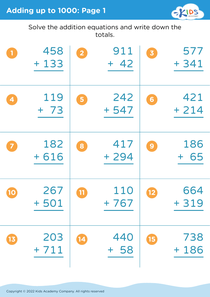Addition Practice Adding up to 50 Worksheets for Ages 8-9
16 filtered results
-
From - To
Welcome to our "Addition Practice Adding up to 50 Worksheets for Ages 8-9"! Designed to enhance your child's arithmetic skills, these worksheets offer engaging activities focused on mastering addition up to 50. Each worksheet incorporates fun visuals and interactive problems to keep students motivated while developing essential math skills. Our resources are perfect for at-home use or classroom integration, catering to various learning styles. As children practice, they build confidence and fluency in their math abilities, setting a strong foundation for future learning. Explore our collection to make addition enjoyable and effective! Start your child's math journey today!
Addition practice is a fundamental skill for children ages 8-9, as it lays the groundwork for more complex mathematical concepts and problem-solving abilities. At this age, children are typically mastering basic arithmetic and beginning to explore more advanced operations like multiplication and division. Ensuring that they can competently add numbers up to 50 helps to boost their confidence and academic self-esteem.
Regular addition practice also enhances cognitive skills such as focus, memory, and reasoning. Through repetitive exercises, children improve their number sense, which is crucial for understanding math in real-world scenarios—be it budgeting allowances, cooking, or estimating distances. Moreover, achieving fluency in addition can reduce mathematical anxiety, making students more willing to tackle challenges in subsequent grades.
For parents and teachers, fostering strong addition skills means that children spend less time struggling with calculations and more time engaging with rich mathematical concepts. This initiative can contribute to a positive learning environment, encouraging children to appreciate mathematics. Moreover, it establishes a solid academic foundation that contributes to overall success in their education journey, making it imperative for adults to prioritize consistent and effective addition practice during these formative years.

